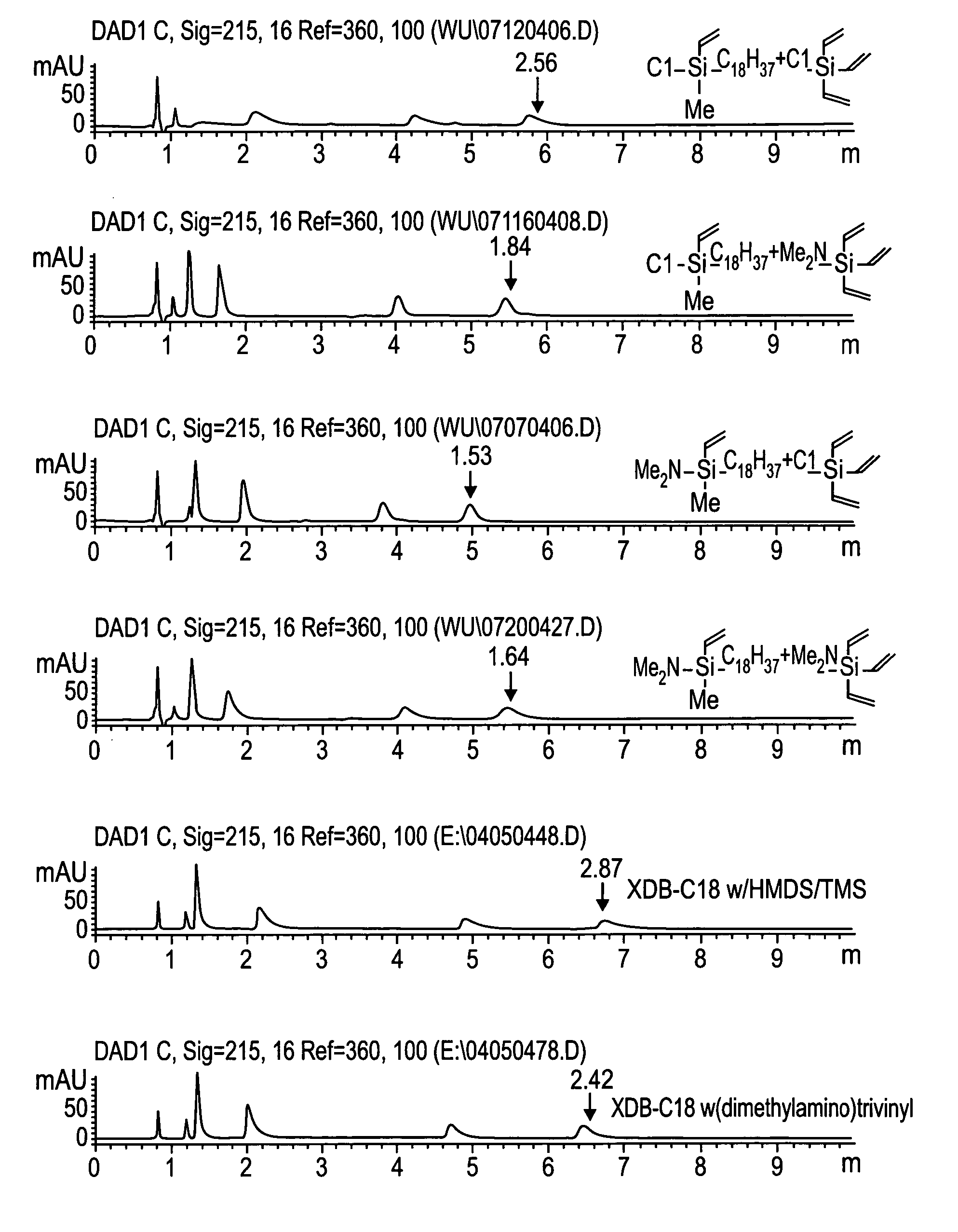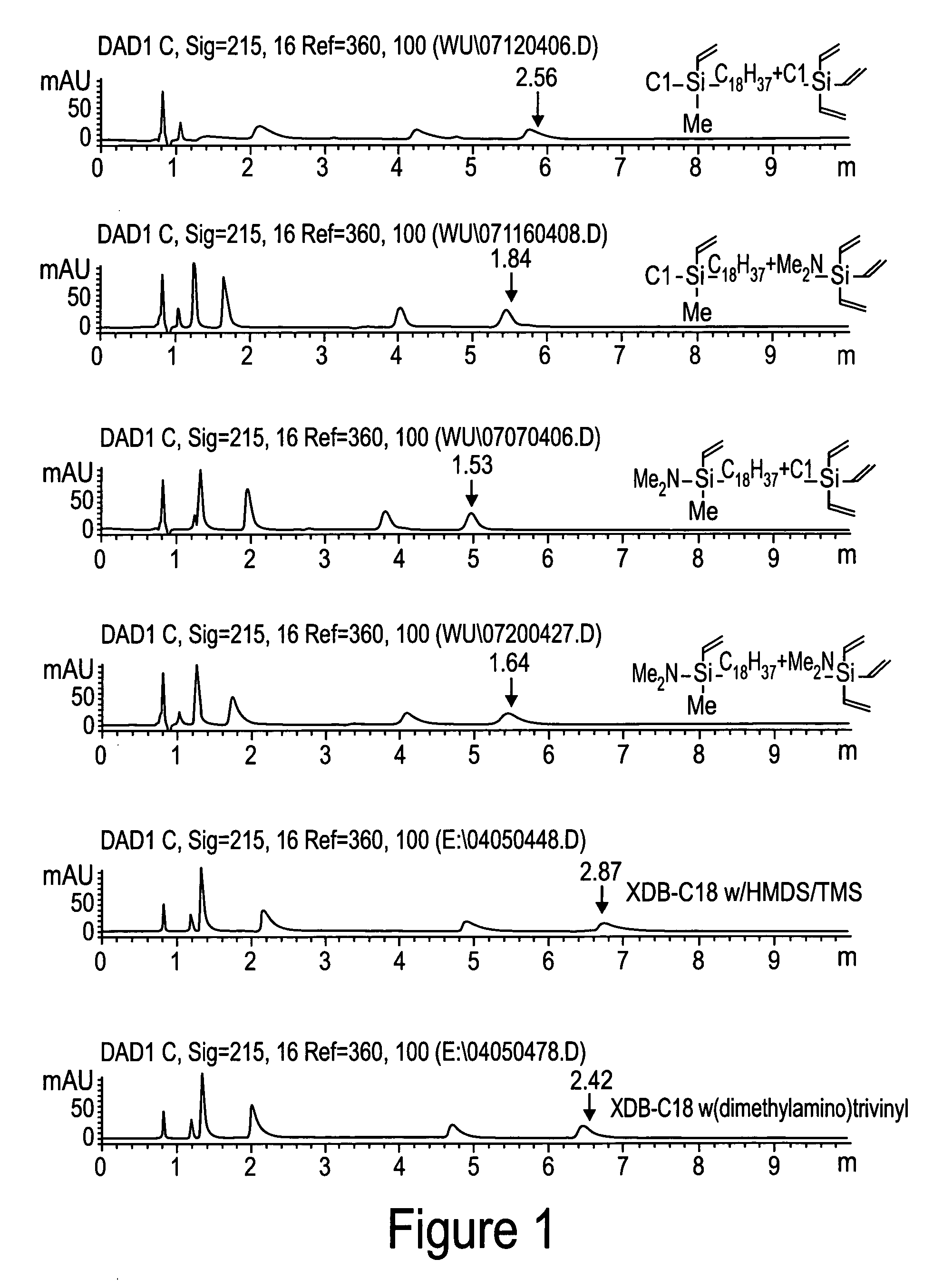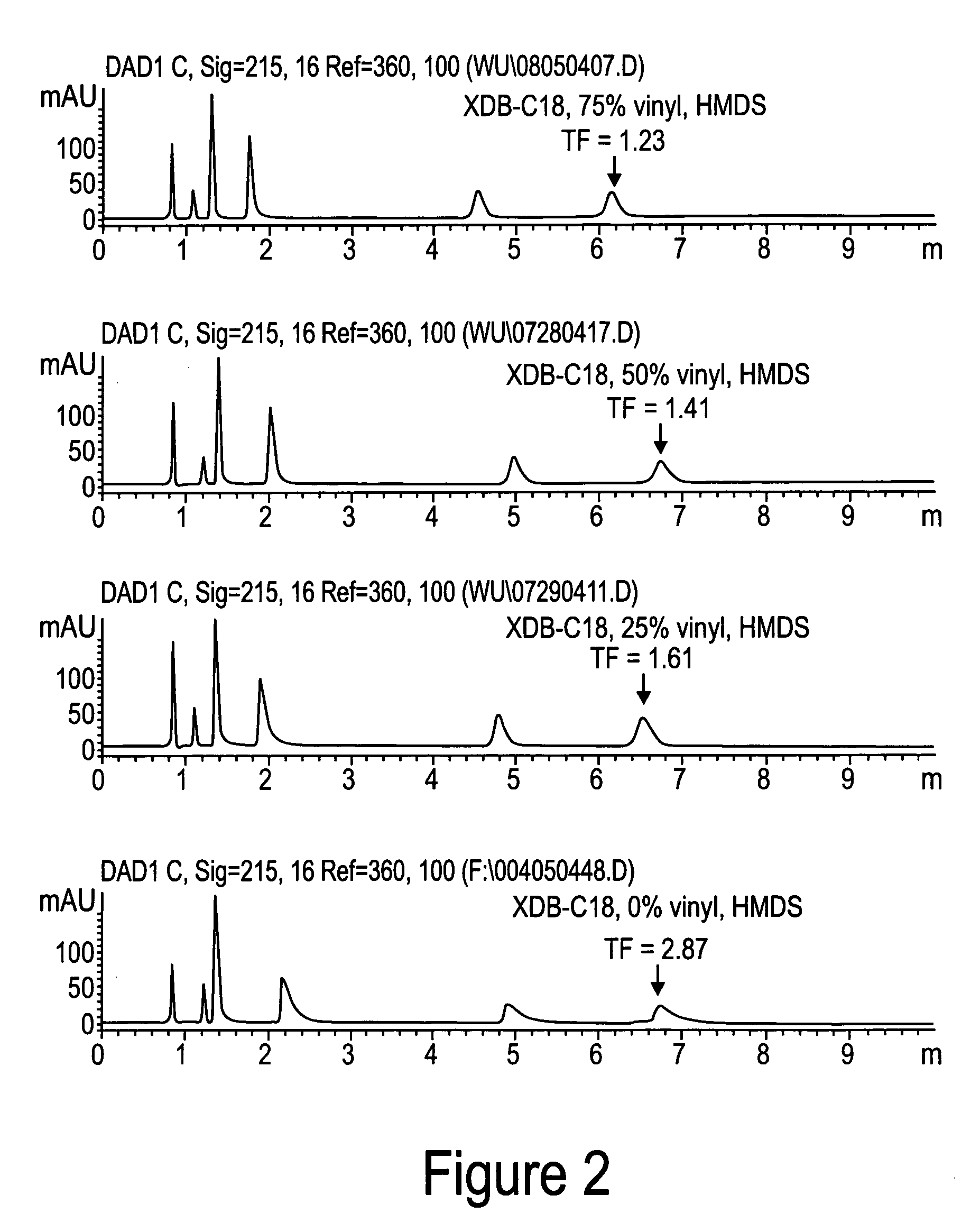Novel stationary phases for use in high-performance liquid chromatography
a technology of stationary phase and liquid chromatography, which is applied in the direction of ion exchangers, separation processes, filtration separation, etc., can solve the problems of irreversible adsorption of some analytes, excessive peak tailing, and increased retention, so as to reduce surface silanol activity and reduce peak trailing
- Summary
- Abstract
- Description
- Claims
- Application Information
AI Technical Summary
Benefits of technology
Problems solved by technology
Method used
Image
Examples
example 1
Preparation of chloromethylvinyloctadecylsilane
[0031] Organosilanes were purchased from Gelest, Inc. Morrisville, Pa. and solvents and other chemicals were purchased from Aldrich, Milwaukee, Wis., unless specifically notified.
[0032] To a solution of dichloromethylvinylsilane (112.8 g, 0.8 mol) in THF (300 ml) / hexane (500 ml) was added octadecylmagnesium chloride in THF (800 ml, 0.5 M) dropwise at room temperature. After addition, the mixture was stirred at room temperature overnight. The solvent was removed by distillation. To residue was added hexane (500 ml). The white solid was filtered, and washed with hexane (400 ml×3) under argon. The solvent was removed by distillation. The residue was distilled out under vacuum (at 180-190° C. / 0.05 mm Hg) to yield the desired product, 63.32 g, yield 44.2%.
example 2
Preparation of (dimethylamino)methylvinyloctadecylsilane
[0033] A four-neck flask was equipped with a mechanic stirrer, two dry-ice condensers. Nitrogen was purge gently through one dry-ice condenser and out from other condenser. Chloromethylvinyloctadecylsilane (63.32 g, 0.175 mole) and hexane (100 ml) were added into the flask. Dimethylamine gas was purged into the system through a dry-ice condenser and was dropped into the mixture. The white precipitate was formed. The reaction was followed by using GC. Dimethylamine and continuing to purge until the peak of chloromethylvinyloctadecylsilane disappeared on GC. The precipitate was filtered and washed with hexane (400 ml×3) under argon. Hexane was removed by distillation. The residue was distilled under vacuum (at 210° C. / 0.06 mm Hg) to yield the desired product, 61.22 g, yield 94.8%.
example 3
Preparation of (dimethylamino)trivinylsilane
[0034] (Dimethylamino)trivinylsilane was obtained by the same method as Example 2. A four-neck flask was equipped with a mechanic stirrer, two dry-ice condensers. Nitrogen was purge gently through one dry-ice condenser and out from other condenser. Chlorotrivinylsilane (103 g, 0.713 mole) and hexane (100 ml) were added into the flask. Dimethylamine gas was purged into the system through a dry-ice condenser and was dropped into the mixture. The white precipitate was formed. The reaction was followed by using GC. Dimethylamine was continued to purge until the peak of chlorotrivinylsilane disappeared on GC. The precipitate was filtered and washed with hexane (400 ml×3). Hexane was removed by distillation. The residue was distilled under vacuum (at 22° C. / 0.4 mm Hg) to yield the desired product, 74 g, yield 68%.
PUM
| Property | Measurement | Unit |
|---|---|---|
| Molar density | aaaaa | aaaaa |
| Hydrophilicity | aaaaa | aaaaa |
| Hydrophobicity | aaaaa | aaaaa |
Abstract
Description
Claims
Application Information
 Login to View More
Login to View More - R&D
- Intellectual Property
- Life Sciences
- Materials
- Tech Scout
- Unparalleled Data Quality
- Higher Quality Content
- 60% Fewer Hallucinations
Browse by: Latest US Patents, China's latest patents, Technical Efficacy Thesaurus, Application Domain, Technology Topic, Popular Technical Reports.
© 2025 PatSnap. All rights reserved.Legal|Privacy policy|Modern Slavery Act Transparency Statement|Sitemap|About US| Contact US: help@patsnap.com



